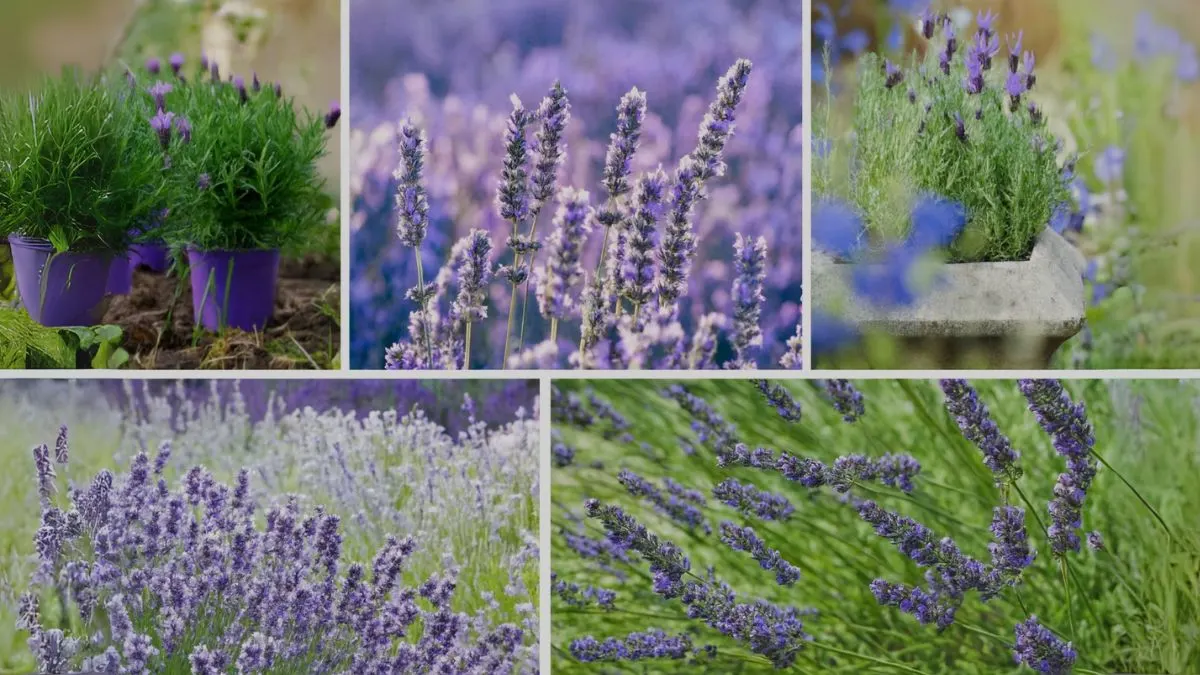Few plants capture both beauty and tranquility like lavender. Its vibrant purple flowers and calming fragrance make it a favorite for gardeners who want both visual appeal and therapeutic benefits. From essential oils to dried arrangements, this versatile herb is cherished across the world.
The best part? Growing it at home is easier than you think. Whether you’re planting in a backyard border, balcony container, or a sunny windowsill, you can enjoy the scent of relaxation right where you live.
Choosing the Right Variety

Different types of lavender thrive in different conditions:
- English lavender prefers well-drained, slightly alkaline soil and is known for its rich fragrance.
- French and Spanish lavenders add exotic flair with unique flower shapes.
- Compact varieties are ideal for pots and indoor growing.
When selecting, always consider your climate and the space you have available.
The Ideal Growing Conditions
For healthy growth, lavender thrives in soil that mimics its native Mediterranean habitat. This means dry, sunny, and slightly alkaline conditions. Here are the essentials:
- Provide it with full sun (6-8 hours daily), well-drained, slightly alkaline soil (pH 6.5-7.5), and good air circulation by spacing plants apart.
- Always plant it in sunny spots with well-drained soil to prevent root rot.
- Use a seed-starting mix that is light and airy when growing from seeds.
🌱 Personal Note: When I first planted it, I learned quickly that soggy soil is its biggest enemy. Shifting my plant to raised beds with sandy soil made all the difference.
Also Read: Cosmos That Thrive in Poor Soil and Full Sun
Growing Lavender Outdoors
- Soil and Planting: Lavender loves warm, well-draining soil, and full sun. If your garden soil is heavy, amend it with sand or gravel to improve drainage.
- Spacing: Space plants 12–18 inches apart to encourage airflow, which reduces disease.
- Watering: Water young plants regularly until established, but once mature, they prefers drier conditions.
Growing Lavender Indoors
Indoor growing is possible with the right setup. Simply place your lavender pots near a south-facing window where they’ll receive maximum sunlight. If natural light is limited, consider using grow lights.
Make sure containers have drainage holes, as standing water can quickly harm the roots. Use terracotta pots since they help wick away excess moisture.
Propagation Tips
Lavender can be started from seed, cuttings, or nursery transplants. Seeds can take longer to germinate, so many gardeners prefer starting with young plants.
If starting from seed:
- Use a seed-starting mix that is light and airy.
- Sow seeds on the surface and cover lightly with soil.
- Maintain warmth and moisture until seedlings appear.
Also Read: Dandelion Roots: The Hidden Treasure Beneath Your Garden
Seasonal Care and Maintenance
- Prune plants lightly in spring to encourage bushy growth.
- Harvest flowers just as they begin to open for the strongest fragrance.
- Mulch with light gravel rather than organic mulch to keep the soil dry and mimic its Mediterranean origin.
Benefits of Growing Lavender
Lavender isn’t just ornamental—it’s practical too:
- Aromatherapy: Its scent reduces stress and improves sleep quality.
- Pollinator-friendly: Attracts bees and butterflies, boosting your garden’s ecosystem.
- Culinary use: Lavender flowers add unique flavor to baked goods and teas.
- Home décor: Dried bundles look beautiful indoors.
Indoor vs. Outdoor Lavender
Factor |
Outdoor Lavender |
Indoor Lavender |
Sunlight |
Full sun, 6-8 hrs daily |
Near a south-facing window |
Soil |
Warm, well-draining, slightly alkaline |
Seed-starting mix that is light and airy |
Watering |
Minimal once established |
Moderate, avoid waterlogging |
Best Varieties |
English, French, Spanish |
Compact or dwarf lavender |
Lavender is more than just a plant—it’s a lifestyle. With its ability to transform a garden or living space into a calming retreat, it deserves a spot in every home. From English lavender outdoors in well-drained, slightly alkaline soil to indoor pots placed near a south-facing window, success lies in mimicking its native Mediterranean roots.
Also Read: Beginner‑Proof Lavender Propagation
So, whether you’re in Canada, the USA, or beyond, give your lavender the warm, well-draining soil and full sun it craves, and it will reward you with fragrance, color, and peace for years to come.






